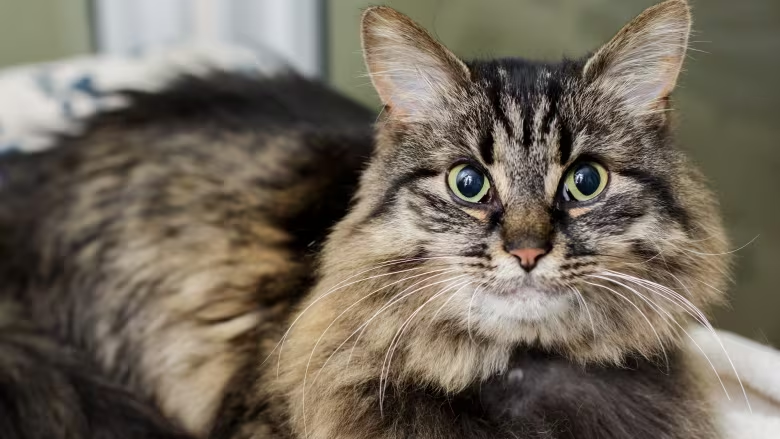Why is my cat peeing on my clothes?

Of all the places for a cat to urinate, why do they often choose our (likely clean) laundry?
Simple: It’s Soft And Comfy
Soft, absorbent materials like laundry provide a comforting texture that cats might find appealing, especially if their litter box is less inviting in comparison. Additionally, the scent of their owner on the clothes can be a draw, as cats are scent-oriented creatures.
Unraveling The Causes: Medical And Behavioral Factors
Cats urinating outside the litter box can be puzzling and distressing for pet owners. It’s crucial to explore the potential causes, which can be broadly categorized into medical and behavioral factors.
Medical Concerns
Medical issues often underlie a cat’s inappropriate urination behaviors. Conditions such as urinary tract infections (UTIs), bladder stones, or kidney problems can make urination painful or frequent, leading cats to associate the discomfort with their litter box. In older cats, arthritis can make accessing the litter box difficult, prompting them to find more accessible and comfortable spots like laundry piles.
– Urinary Tract Infections (UTIs): Symptoms include frequent urination, crying while urinating, and even blood in the urine.
– Bladder Stones: Similar to UTIs, this condition may cause your cat to strain while urinating.
– Kidney Issues: Kidney problems can result in increased thirst and more frequent urination, often outside the litter box.
– Stress and Anxiety: Environmental changes, such as introducing a new pet or moving to a new home, can lead to stress-related urination issues in cats.
Behavioral Reasons
Behavioral factors are also important to consider. Cats may mark their territory by urinating, especially in homes with multiple cats where there might be competition for space or resources.
– Territorial Marking: Unneutered males are more prone to this behavior, but it can occur in any cat.
– Environmental Stressors: Changes in the household, such as the addition of new family members or pets, can trigger stress-related urination.
– Preference for Certain Textures: Some cats develop a preference for the soft, absorbent texture of laundry, leading them to choose it as a preferred spot for urination.
Solutions And Strategies: How To Redirect Your Cat
Once the cause of your cat’s behavior is identified, you can employ targeted strategies to redirect your cat away from urinating on the laundry.
Litter Box Optimization
Litter box issues are often the easiest to resolve. The following steps can make the litter box more appealing to your cat:
– Cleanliness: Scoop daily and clean the box regularly to maintain a hygienic environment.
– Number of Boxes: Ensure you have one more litter box than the number of cats in your home to prevent overcrowding.
– Box Type and Placement: Some cats prefer open boxes, while others prefer covered ones. Place litter boxes in quiet, easily accessible locations.
– Litter Type: Experiment with different types of cat litter to find your cat’s preference in terms of texture and scent.
Environmental Enrichment
Reducing stress and boredom can be key in resolving behavioral urination:
– Interactive Play: Engage your cat with toys and regular playtime sessions to stimulate their mind and body.
– Safe Spaces: Provide safe, quiet areas where your cat can retreat and feel secure, such as cozy cat beds or secluded spots.
– Routine: Maintain a consistent daily routine for feeding, play, and attention to provide your cat with a sense of stability and security.
Behavioral Modification
In some cases, retraining your cat can be effective. This includes:
– Positive Reinforcement: Reward your cat for using the litter box with treats and affectionate chin rubs to encourage desired behavior.
– Deterring from Laundry: Keep laundry out of reach by storing it in closed hampers or closets. Additionally, use deterrents like scent repellents or motion-activated devices near laundry areas to discourage urination.

Why is my cat peeing on my clothes?
Poor Litter Box Conditions
Cats prefer having a clean location to eliminate, and when their litter box doesn’t meet their standards, they might find somewhere else to relieve themselves. It’s good practice to clean the litter box at least one to two times daily to ensure appropriate conditions. Multi-cat households should be able to supply multiple boxes to meet their cat’s needs. A general rule of thumb is that there should be one more litter box than there are cats in the household. Other aversions to the litter box could be caused by noise in the area or difficulties entering the litter box, e.g., the box is too high for them to easily access. Some cats also have a preference for litter type or covered/uncovered litter boxes.
How This Can Be Addressed
Ensure that the litter box is cleaned frequently. If you have a multi-cat household, provide numerous litter boxes in accessible locations throughout the house but never in busy or noisy areas. This will encourage cats to use their preferred box. Make sure the litter boxes are big enough for your cat, offer a covered and uncovered box, and trial different litter types to find out what your cat prefers.
Stress or Anxiety
Cats are wary by nature. Often cats can have stress or anxiety, and the underlying cause may go unrecognized by their pet parent. When cats experience anxiety for any reason, they may urine-mark as a way of claiming their territory. Cats may be experiencing inter-cat turmoil, missing an owner who has gone away, or be anxious about house guests. Alternatively, maybe their home life has changed and they are anxious. Even something as small as rearranging the furniture can cause cats to urine-mark. Stress can also sometimes lead to inflammation of the bladder in cats, which needs veterinary treatment.
How This Can Be Addressed
Trying to lessen your cat’s stress is essential. Provide your cat with their own space, where they can be away from other cats and stressful stimuli. Pheromone sprays and diffusers are available, like Feliway, that are designed to be calming. Having these in your home can reduce your cat’s overall stress levels. Closely observe your cat or cats. Are there territorial behaviors that are being noted? Ensure that litter boxes are not kept near a certain cat’s claimed territory. Have litter boxes available throughout the household. In some severe cases, your pet may benefit from an anxiety medication. Some cats may require this for a short period of time, whereas others may need this for life.
Urinary Tract Concerns
Unfortunately, cats urinate inappropriately when they are battling certain health conditions.
Cystitis, or inflammation of the bladder, causes cats to urgently need to urinate and they may do so outside of the litter box. These cats will generally urinate in small volumes and may have blood in the urine. Urinary tract infections, cancers of the bladder, and bladder stones are all causes of cystitis. However, it can also occur due to stress. When no underlying cause of cystitis can be identified, it is referred to as feline idiopathic cystitis, and stress is the likely culprit. If at any point your cat becomes unable to urinate, this suggests a urinary blockage. Please seek immediate care for your cat, as this condition is life-threatening if not addressed quickly.
Certain disorders will cause cats to drink and urinate more than usual; diabetes, kidney disease and an overactive thyroid gland are common causes. These cats may urinate in large volumes around the house because their bladder is so full.
Treatment and Intervention
Your cat will need to visit a veterinarian. Feline idiopathic cystitis is inflammation of the bladder wall which typically occurs due to stress. Reducing stress within the household and appropriate pain control is critical in resolving this condition. Alternatively, urinary tract infections often need appropriate antibiotics and pain relief to resolve signs. Other problems often need ongoing veterinary treatment.
Arthritis
As cats age, they become more prone to arthritis. Arthritis may make posturing to urinate and getting in and out of the litter box more painful to accomplish. In cases where this is occurring, the cat may find an area that is more easily accessible to empty their bladder.
Treatment and Intervention
If you suspect that your cat is not able to easily gain access to their litter box due to their joints, consider moving the box. For example, if your litter box has always been upstairs, but now it is more challenging for your cat to make it upstairs, consider moving it downstairs. Alternatively, if your litter box has deep walls, you may want to try a shallow pan so your pet doesn’t have to jump over the high walls. Additionally, reach out to your veterinarian to see which arthritis interventions are best for your cat.
Hormonal Behavior
In intact males and females urine marking may signal availability for mating. This behavior is very similar to territorial marking but only occurs in unaltered cats. It may occur on upright surfaces and in cats that have no problem using the litter box at other times.
